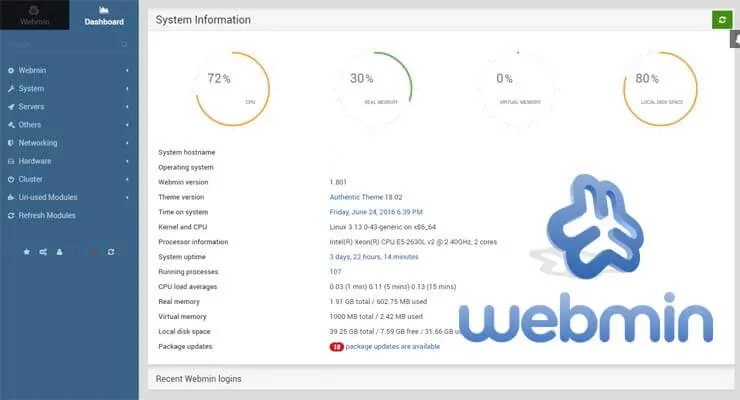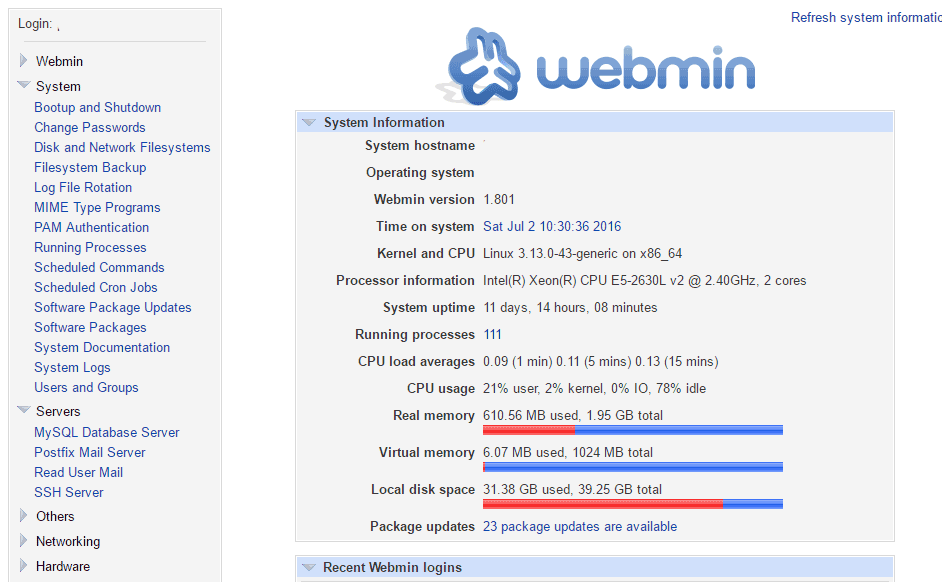

Make sure there is a space before 127.0.0.1. To change the hostname for your server, open the file /etc/hostname in your editor:ĭelete the current hostname and replace it with your hostname: To check the current server hostname, run this command: Next, change the hostname to match the FQDN you’ve pointed to the server in the prerequisites.
#Webmin themes install#
Then install any necessary updates and packages to ensure you start with a stable and up-to-date system. Once you have logged in, update the package database:

your_, where your_ is your domain name.įor Virtualmin to work properly, you need to configure the hostname and FQDN on the server itself by editing the /etc/hostname and /etc/hosts files, as well as update your DNS settings so DNS lookups resolve properly.įirst, log in to your server as your non-root user.
#Webmin themes how to#
Two registered custom nameservers for Virtualmin by following the How To Create Vanity or Branded Nameservers with DigitalOcean Cloud Servers tutorial.You can learn how to point domain names to DigitalOcean Droplets by following the How To Set Up a Host Name with DigitalOcean tutorial. A Fully-Qualified Domain Name configured to point to your server.One new Ubuntu 16.04 server with at least 1GB of RAM set up by following the Ubuntu 16.04 initial server setup guide, including a sudo non-root user and a firewall.To complete this tutorial, you will need: Use a new server and transfer your data over instead. Warning: Do not follow this tutorial on a live production server that is already running Apache, MySQL and PHP, as this can result in data loss. Once you complete this tutorial you will be able to create any number of user accounts to host multiple domains on a single server through your browser. Once you install Virtualmin and its components, you’ll configure Webmin through its graphical interface and create a new virtual host with Virtualmin. A LAMP stack (Apache, PHP, and MySQL), for serving web sites and web applications.

This script will install everything you need to use Virtualmin, including Webmin and the following prerequisites: In this tutorial, you’ll use a script to install the free edition, Virtualmin GPL. With Virtualmin, you can manage user accounts, Apache virtual hosts, DNS entries, MySQL databases, mailboxes, and much more. Virtualmin is a plugin for Webmin that simplifies the management of multiple virtual hosts through a single interface, similar to cPanel or Plesk. Webmin is a web front-end that allows you to manage your server remotely through a browser.


 0 kommentar(er)
0 kommentar(er)
